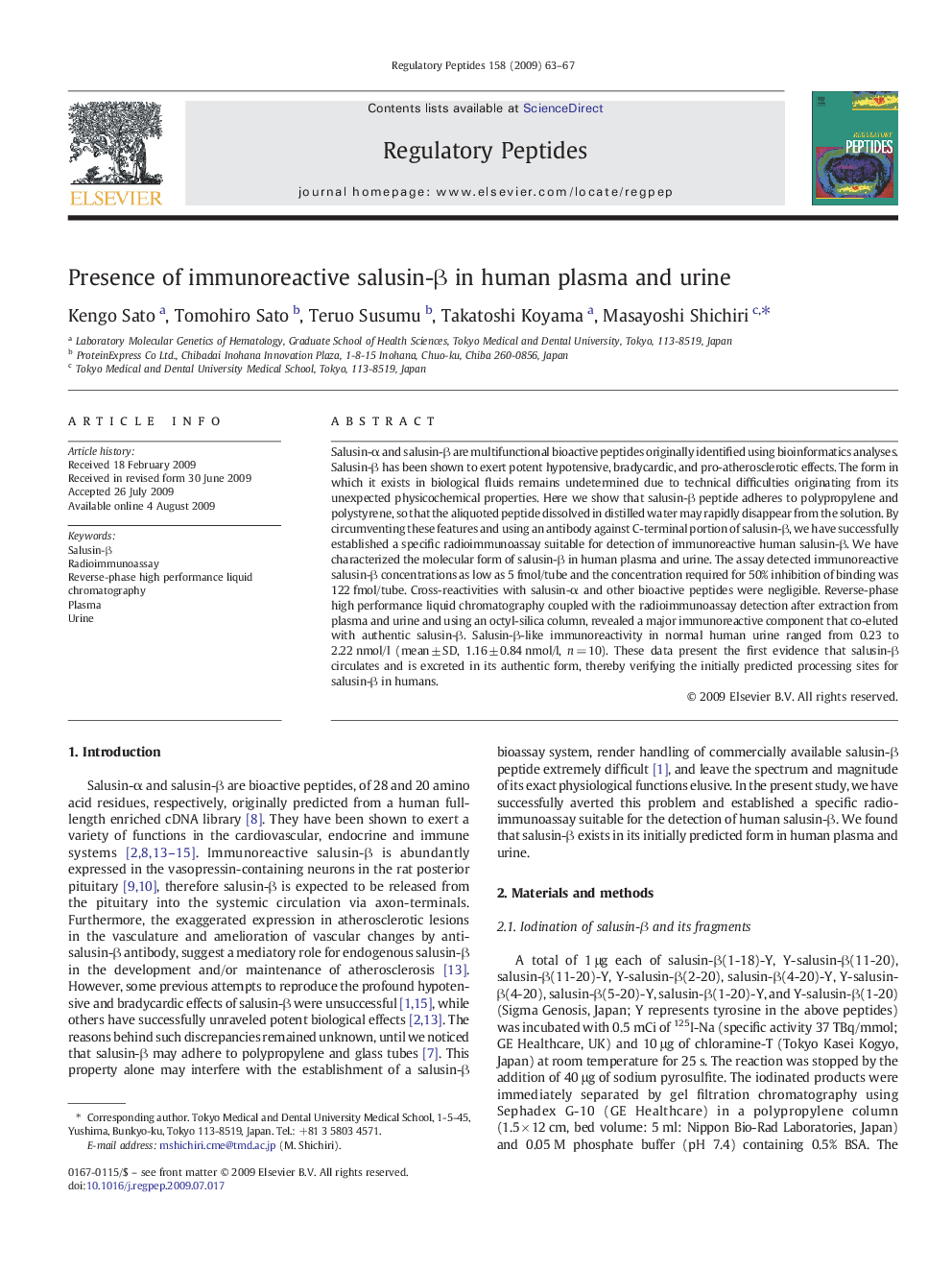| Article ID | Journal | Published Year | Pages | File Type |
|---|---|---|---|---|
| 2022946 | Regulatory Peptides | 2009 | 5 Pages |
Salusin-α and salusin-β are multifunctional bioactive peptides originally identified using bioinformatics analyses. Salusin-β has been shown to exert potent hypotensive, bradycardic, and pro-atherosclerotic effects. The form in which it exists in biological fluids remains undetermined due to technical difficulties originating from its unexpected physicochemical properties. Here we show that salusin-β peptide adheres to polypropylene and polystyrene, so that the aliquoted peptide dissolved in distilled water may rapidly disappear from the solution. By circumventing these features and using an antibody against C-terminal portion of salusin-β, we have successfully established a specific radioimmunoassay suitable for detection of immunoreactive human salusin-β. We have characterized the molecular form of salusin-β in human plasma and urine. The assay detected immunoreactive salusin-β concentrations as low as 5 fmol/tube and the concentration required for 50% inhibition of binding was 122 fmol/tube. Cross-reactivities with salusin-α and other bioactive peptides were negligible. Reverse-phase high performance liquid chromatography coupled with the radioimmunoassay detection after extraction from plasma and urine and using an octyl-silica column, revealed a major immunoreactive component that co-eluted with authentic salusin-β. Salusin-β-like immunoreactivity in normal human urine ranged from 0.23 to 2.22 nmol/l (mean ± SD, 1.16 ± 0.84 nmol/l, n = 10). These data present the first evidence that salusin-β circulates and is excreted in its authentic form, thereby verifying the initially predicted processing sites for salusin-β in humans.
